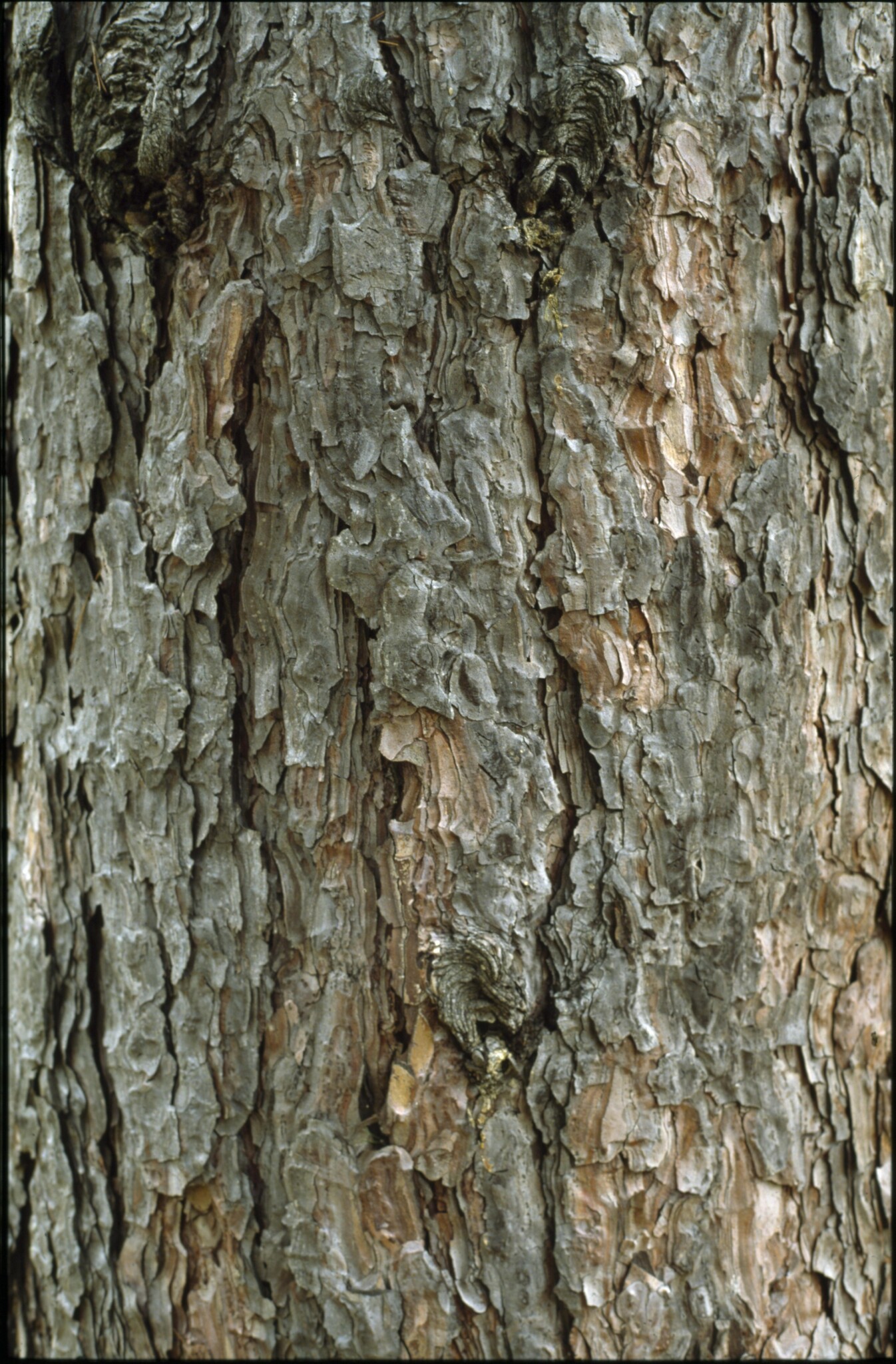
Tree 20-40 m tall with a single straight trunk. Bark silvery grey, tinged orange-red, peeling in small scales. Buds ovoid to cylindrical, resinous, scales closely pressed to the bud. Young shoots yellowish to brown. Leaves in 2's, mostly 8-14 cm long, rarely to 18 cm, stiff or flexible, prickly, dark green, with a persistent sheath to 1.5 cm long. Cones mostly solitary but occasionally in groups of 3-5, 5-10 cm long, ovate, light in weight, softish and flexible, glossy yellow-brown when young; scales blunt or occasionally with minute prickles on scales at the base of cones; base more or less equal. This species is variable with some taxonomists recognising many geographical variants. Only two of these appear to be found in Australia, although others may be found in plantation areas such as that at Creswick, Victoria, and intergrading variants may be encountered.
S Europe, Turkey.
An important straight-trunked timber tree in its area of natural occurrence.
Silver-grey bark; yellowish young shoots; cones lightweight, yellow at first but becoming grey, base symmetrical or only slightly unequal. This contrasts with the superficially similar P. contorta which has a strongly slanting base. Two varieties may be encountered: 1. Dense crown; leaves stiff, mostly dark green, mostly 8-12 cm long; young shoots brown var. nigra 2. Open crown; leaves flexible, grey-green, 10-17 cm long; young shoots yellow-brown var. corsicana.
Some of Victoria's earliest plantations of this species, planted 1893, may be seen at Sawpit Gully, Creswick.
Source: (1995). Pinaceae. In: . Horticultural Flora of South-eastern Australia. Volume 1, Ferns, conifers & their allies. The identification of garden and cultivated plants. University of New South Wales Press.
